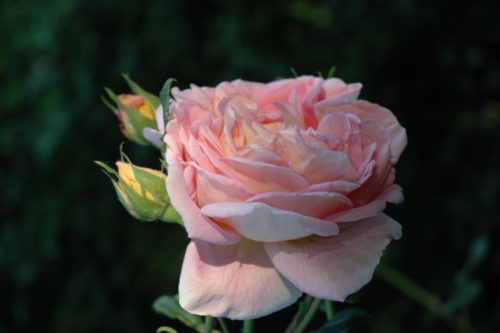Rose, shrub, belonging to the rose family. Wild or botanical roses have their origins in the temperate regions of the northern hemisphere.
You are viewing the mobile-adapted version of the page.
The one for tablets, laptop and desktop also provides general information, such as origin, toxicity and cultivation.
Rose – (Rosa), shrub, belonging to the rose family (Rosaceae). Wild or botanical roses have their origins in the temperate regions of the northern hemisphere. Over 100 species of botanical roses form the basis of the more than 13,000 cultivars. That number increases every year.
The botanical roses dog rose (Rosa canina), sweetbriar rose (Rosa rubiginosa) and burnet rose (rosa pimpinellifolia) still populate ruins, native gardens and wastelands.
Roses like nutritious soil (light clay is preferred) and a sheltered spot in full sun. In drought, water promptly, as roses tolerate drought poorly.
File rose varieties provides an overview of the many varieties of improved roses.
Bugs
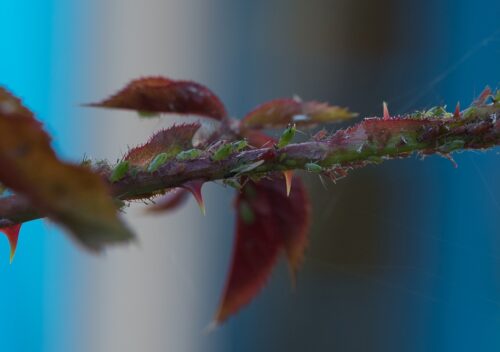
Aphids on the leaves, flower buds and stems. Sometimes accompanied by ants that “milk” the aphids for honeydew.
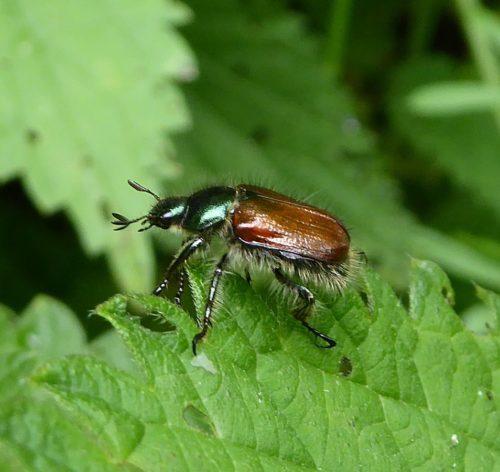
Flower buds eaten away by the Garden chafer (Phyllopertha horticola).
Round bites were taken from the leaf edges: the Vine weevil (Otiorhynchus sulcatus) eats rose leaves, among other things, starting at the edges.
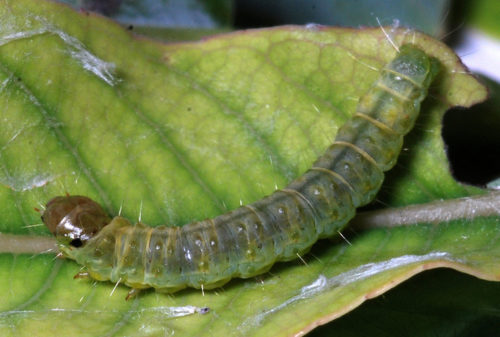
Caterpillars in rolled leaves or spun between the leaves; gnawing damage to buds and leaves: Tortrix moth (Tortricidae). The carnation tortrix (Cacoecimorpha pronubana) and the Cyclamen tortrix(Clepsis spectrana) are often found on roses.
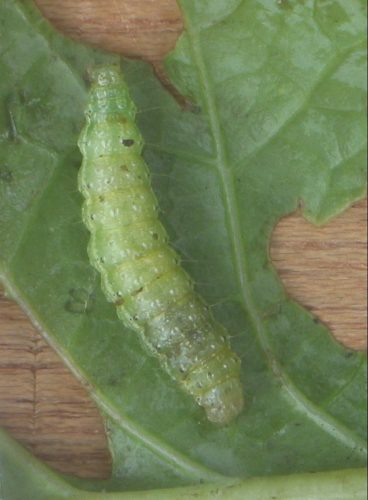
Fungi & diseases
Round, gray to dark brown to + 1 cm spots develop on the leaves: Dark leaf spot (Alter naria
Irregular spots appear on leaves, first yellow, then brown, discoloring to purple. Leaf drop early. Young shoots may show purple spots: leaf and stem: Septoria blight (Septoria spp).
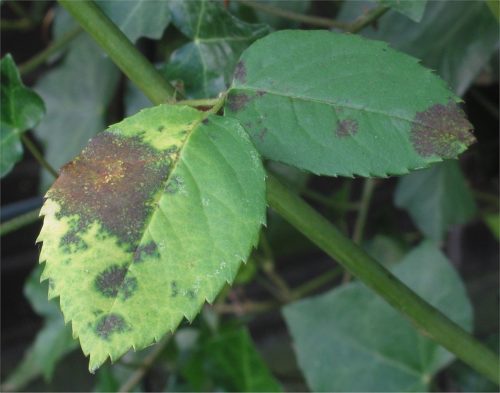
Star-shaped black spots on leaves and stems resulting in premature leaf fall: Rose black spot (Diplocarpon rosae).
White powdery spots on the leaves; in severe infestation, sometimes the underside is also covered with fungal spots. Young leaves become misshapen; reduced growth of the rose: powdery mildew (Sphaerotheca pannosa).
Purple to gray-black spots develop on leaves, stem, stem and petal. Leaf yellowing, mildew on the underside, leaves falling off prematurely: downy mildew (Pseudoperonospora sparsa).
A few months after planting, roots are affected, leaves yellow, growth lags, rose dies: Phytophthora or Pythium (Pythium spp.).
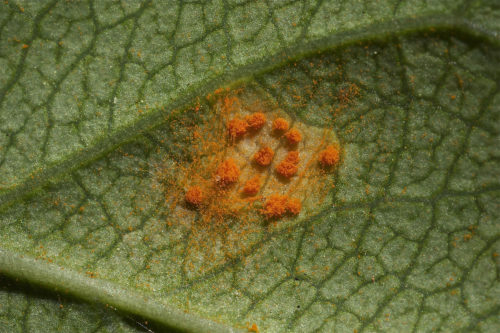
In summer, patches of orange/brown fungal spores appear on the underside of the leaves. In winter, the fungal spores turn brownish black: rose rust (Phragmidium mucronatum).
Leaves take on a silvery sheen: silver leaf (Chondrostereum purpureum).
Other
A grafted rose languishes while the rootstock produces shoot after shoot. Usually the grafting goes well, occasionally not. Sometimes graft incompatibility occurs if the properties of the rootstock do not match those of the rose to be grafted. Replace the rose.
Tree rose lags in growth, foliage yellowing as early as summer, with drought, drying out quickly. From the rootstock, the bark is (partially) scraped off: cats still like to sharpen their nails on tree roses. Wrap the trunk with netting.

